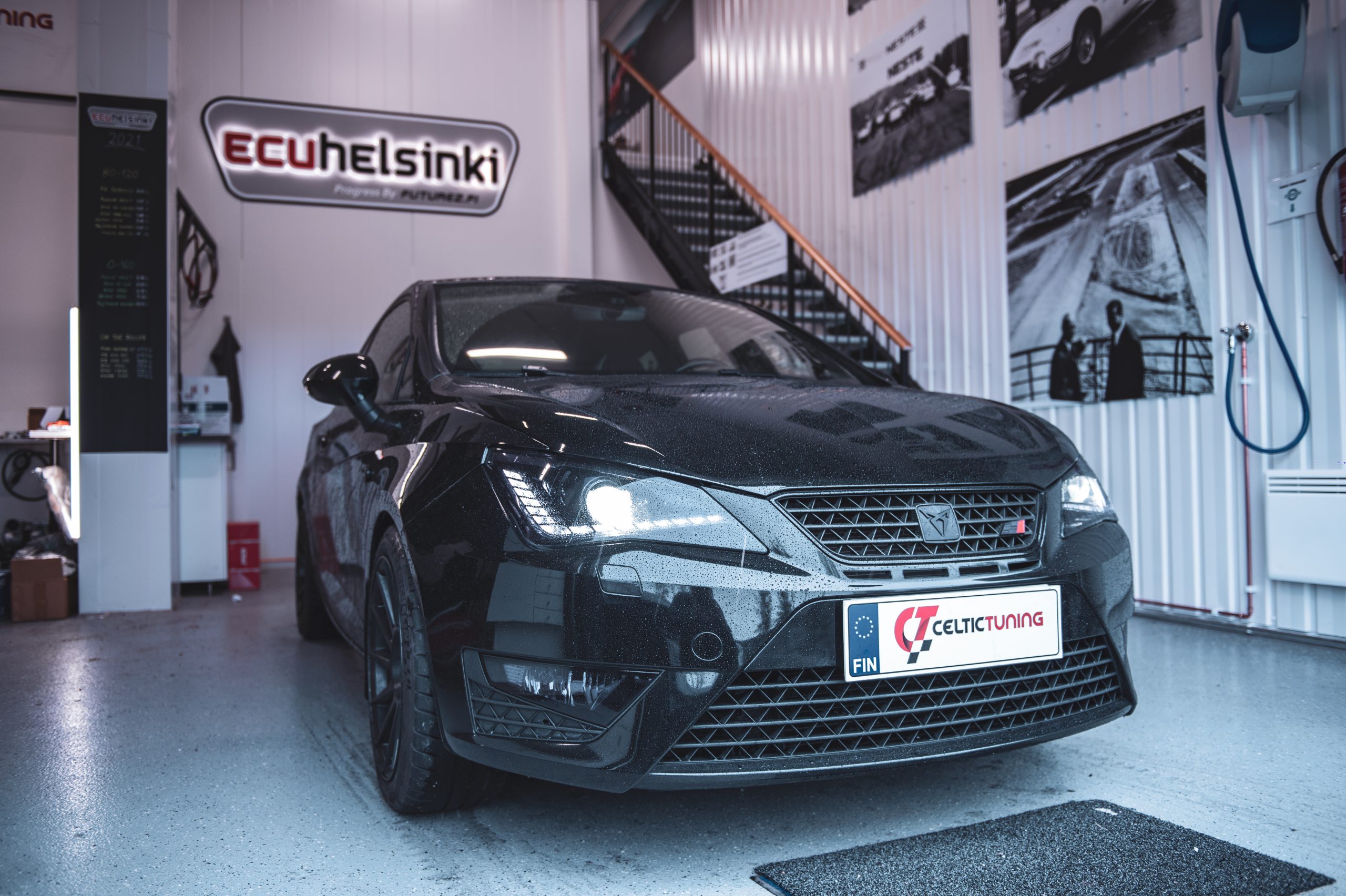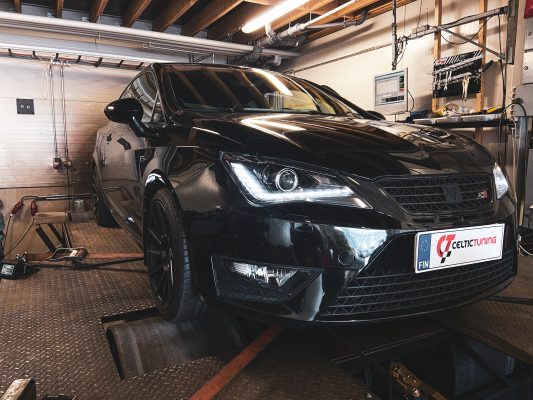
Four-Hundred-Horsepower Grocery Getter
We’re not talking about a fruit bag from that famous German supermarket chain, but rather the dyno chart of a different kind of semi-German ride.
To clarify, it’s not exactly a grocery getter, but rather the sprightly Seat Ibiza Cupra model. This model comes equipped with a 1.8L turbo engine that delivers a respectable 192hp to its front paws in stock form – a lively little amusement park ride for many as is.
But the driver of this particular one had a slightly different vision.
The project originally started with the idea of checking the previous engine tune on the otherwise stock car and tightening it up. We managed to find some nice improvements over the previous tune done elsewhere, but there was still some grip left in the front tires – meaning, more fun factor was clearly needed.
On the next visit, we upped the stakes, swapping out the stock turbo for a Littco L380X, which we built into an IS38 turbine housing we found kicking around the shop, and fitted it into place.
370 Horses – Fuel Running Low, Heat Running High
At this point, things were getting a bit hairy behind the wheel, with the power climbing to nearly 400hp, accompanied by a beefy torque curve. Turbo lag was non-existent, and the punch came right from the lowest revs, just as we had hoped.
However, when pushing for maximum power, the fuel supply started to hit its limits – as we neared the edge, the fuel rail pressure began to drop worryingly during hard acceleration, and the intake temps tried stubbornly to climb above the tolerable limit – even with the efficient Wagner intercooler in place. It was time to dial back the power just a notch and send the car (with some serious performance) out on the road, awaiting the next phase of the project.
Page Up! More Power!
Once you start playing, might as well go all in. We discussed with the customer what else we could do for the Seat, as the hunger for more power grew, as it tends to with cars.
The recipe we came up with at this stage was:
- Improving traction by installing a Wavetrac limited-slip differential in the transmission.
- Enhancing drivability by replacing all the suspension bushings with adjustable polyurethane ones, upgrading the suspension, and adding a rear anti-roll bar, which Ibiza lacks from the factory.
- Upgrading the fuel pump and installing an AEM water/methanol injection system to increase fuel supply capacity and control intake temperatures.
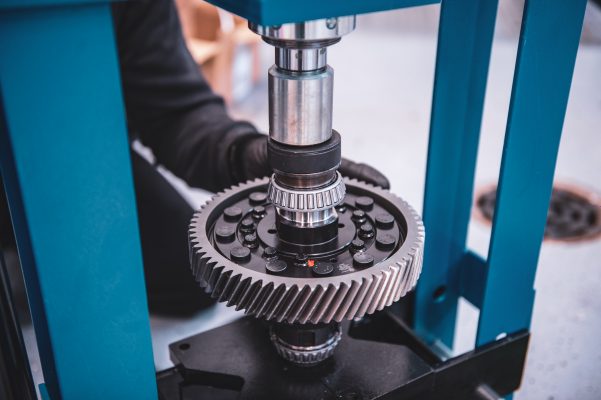
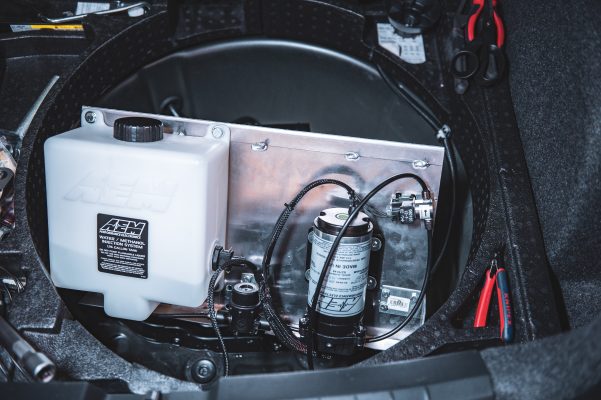
Effortlessly into the 400hp Club
The next steps paid off. The brave 1.8T engine effortlessly took nearly 2BAR of boost pressure, and the fuel supply finally kept up. Even with the original HPFP (high-pressure fuel pump), the beefed-up fuel tank pump did the trick well enough. (Unfortunately, there was no HPFP upgrade available for this model.)
Intake temperatures were instantly dropped by over ten degrees Celsius when the WMI (water/methanol injection) was brought into action, with a methanol mixture being pumped into the intake for extra cooling.
With these upgrades, the dyno recorded a comfortable 427hp / 565Nm without breaking a sweat – a respectable number, especially considering the engine is still completely stock and has already clocked a good few miles.
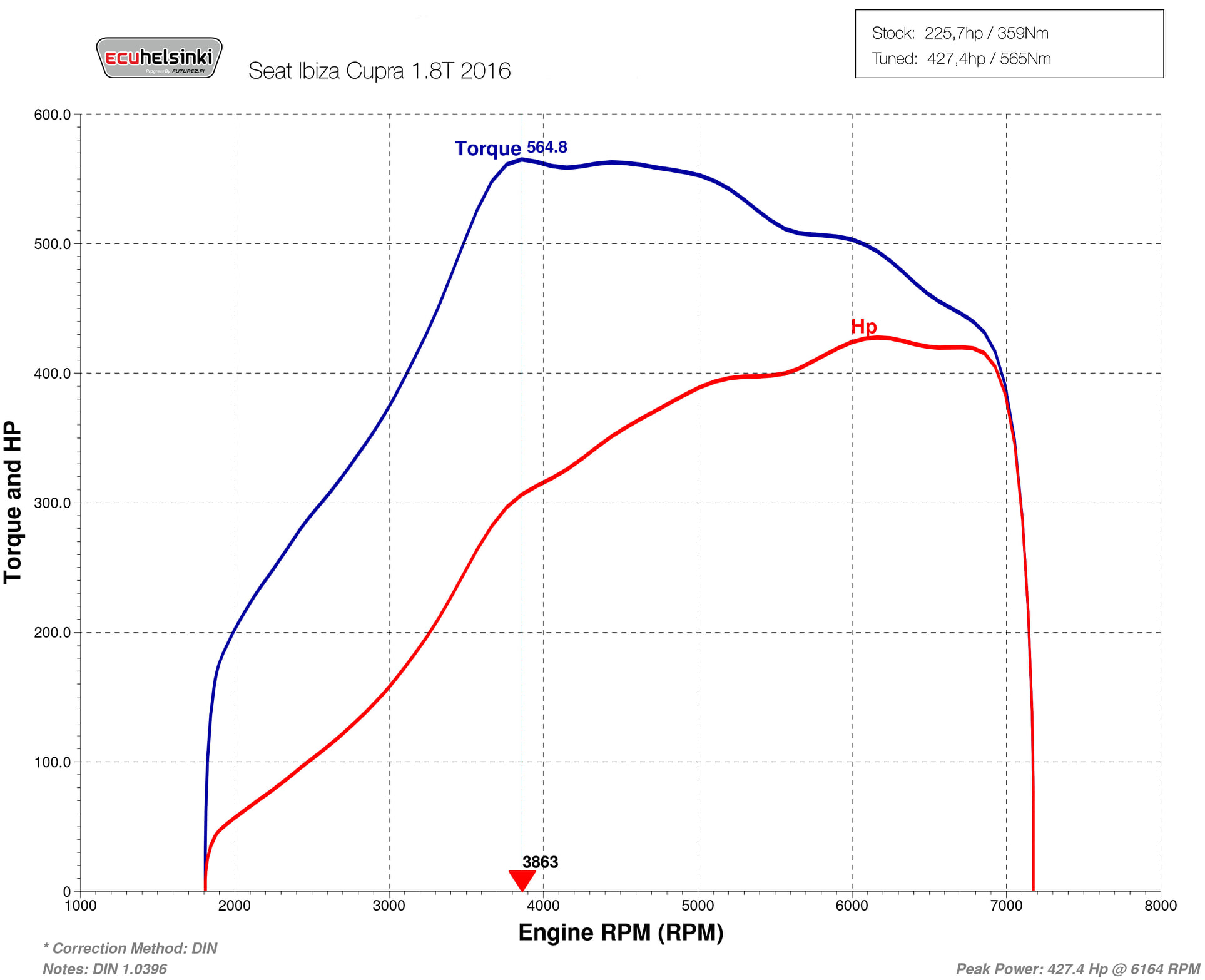
Put to the Test in Real Life
During and after the project, from what we’ve heard, this Ibiza has been through some serious and well-deserved hard driving for tens of thousands of kilometres by now – from daily commutes to summer track days. At this point, many are tipping their hats to the stock engine, which has impressively survived and continues to perform, thanks to Amsoil lubricants keeping things smooth.
With the owner’s laid-back but proper attitude, this car built for hard driving gets a thumbs up from us at Futurez / ECU Helsinki!

